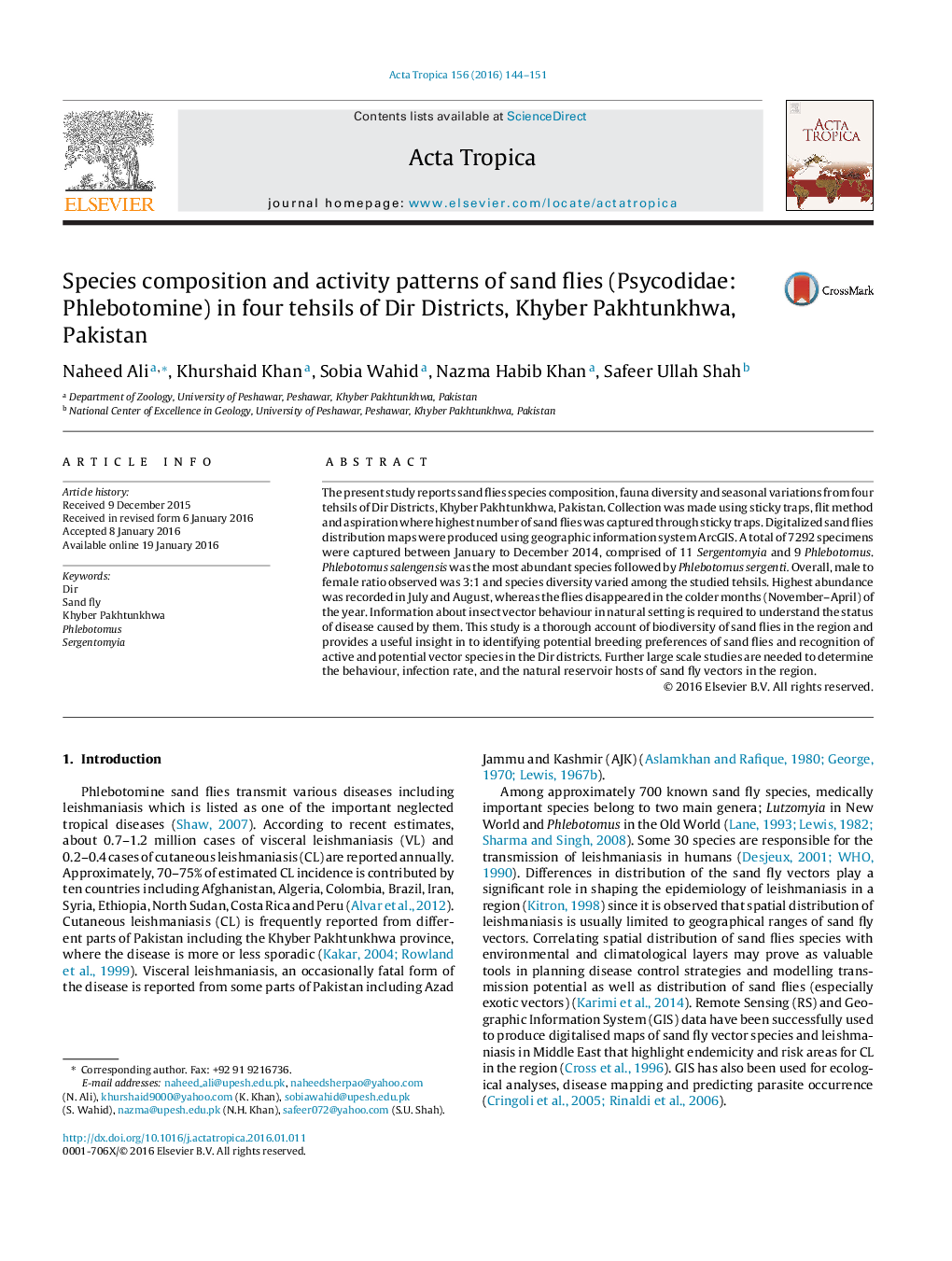| Article ID | Journal | Published Year | Pages | File Type |
|---|---|---|---|---|
| 3393756 | Acta Tropica | 2016 | 8 Pages |
•Epidemiological survey in Dir Districts, Khyber Pakhtunkhwa, Pakistan.•Total of 20 sand fly species were reported in the study.•11 Sergentomyia and 9 Phlebotomus species.•P. salengensis was the most abundant species followed by P. sergenti.•Overall, males to female ratio observed was 3:1.•Highest abundance was observed in July and August.
The present study reports sand flies species composition, fauna diversity and seasonal variations from four tehsils of Dir Districts, Khyber Pakhtunkhwa, Pakistan. Collection was made using sticky traps, flit method and aspiration where highest number of sand flies was captured through sticky traps. Digitalized sand flies distribution maps were produced using geographic information system ArcGIS. A total of 7292 specimens were captured between January to December 2014, comprised of 11 Sergentomyia and 9 Phlebotomus. Phlebotomus salengensis was the most abundant species followed by Phlebotomus sergenti. Overall, male to female ratio observed was 3:1 and species diversity varied among the studied tehsils. Highest abundance was recorded in July and August, whereas the flies disappeared in the colder months (November–April) of the year. Information about insect vector behaviour in natural setting is required to understand the status of disease caused by them. This study is a thorough account of biodiversity of sand flies in the region and provides a useful insight in to identifying potential breeding preferences of sand flies and recognition of active and potential vector species in the Dir districts. Further large scale studies are needed to determine the behaviour, infection rate, and the natural reservoir hosts of sand fly vectors in the region.
Graphical abstractFigure optionsDownload full-size imageDownload as PowerPoint slide
